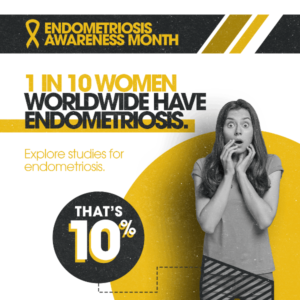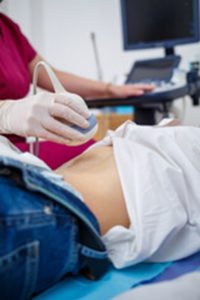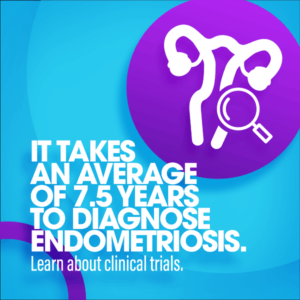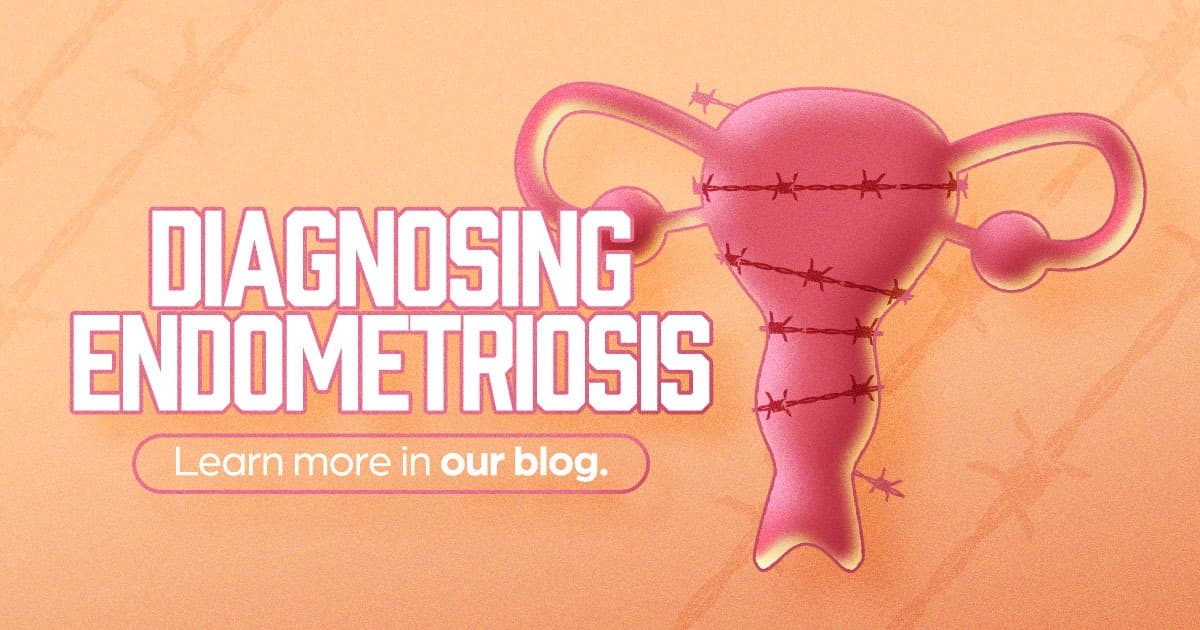Every March, Endometriosis Awareness Month takes place worldwide to increase awareness and highlight the symptoms and other important information about this chronic condition. In honor of the approximately 200 million individuals living with endometriosis (endo), we want to talk about ways to diagnose it and how clinical research studies are helping improve care options.

What is Endometriosis, and What Are the Symptoms?
The tissue that lines a woman’s uterus (endometrium) responds to changes in the hormone estrogen levels. First, it thickens with the anticipation of the monthly egg release. Then, when conception does not occur, the body will pass the egg and excess tissue during menstrual bleeding.
With that in mind, endometriosis is a condition where endometrial tissue grows outside the uterus in other body areas. The breakdown and bleeding of this tissue each month is in an area it cannot easily get out of your body. Because the tissue behaves as it would in the uterus, it causes pain due to the inflammation, irritation, and swelling in the surrounding tissues.
Endo growths are most common in the following areas:
- Ovaries
- Fallopian tubes
- The outer surface of the uterus and in the pelvis
- Tissues that hold the uterus in place
Chronic pelvic pain is the most common symptom of endometriosis, especially before and during the menstrual period. Women with endo may also experience pain during intercourse and heavy menstrual bleeding. A type of scar tissue capable of binding your organs together (adhesions) may also form and cause fertility issues.
How do Healthcare Providers Diagnose Endo?

After talking with your doctor about your symptoms, they may take some of these initial steps to find out if you have endometriosis:
- Pelvic examination: Your doctor may do a pelvic exam first because it’s easier to feel larger cysts or scars behind your uterus. However, smaller areas of endometriosis are harder to feel.
- Imaging tests: An internal or external ultrasound uses sound waves to capture images of your reproductive organs. Your doctor may use either method to check for ovarian cysts from endometriosis. Another imaging test that takes detailed pictures of the inside of your body is Magnetic resonance imaging (MRI).
- Medicine: If there are no signs of an ovarian cyst during an ultrasound, your doctor may prescribe medicine such as:
- Hormonal birth control can help lessen pelvic pain during your period.
- Gonadotropin-releasing hormone (GnRH) agonists block the menstrual cycle and reduce the amount of estrogen your body makes. These types of medication may also help with pelvic pain.
- If your pain improves with hormonal medicine, your provider can reasonably assume you may have endometriosis. On the other hand, these medications work only as long as you take them. Hence, if you stop taking them, your pain will likely come back.
- Surgery: The only way to definitively diagnose endometriosis is through a laparoscopic surgical procedure. A laparoscopy uses a viewing instrument that a surgeon inserts through a small incision in your abdomen to look for signs of endo. It can provide information about the location, extent, and size of the endometrial growths. Your surgeon may be able to see the growths and make a diagnosis, or they may need to take a tissue sample (biopsy) for further testing. Your surgeon can also treat the endometriosis growths during the procedure so that you get some pain relief for a time.
Celebrate Endometriosis Awareness Month by Joining a Study!

If you are living with endometriosis, your experiences can help support ongoing research efforts to improve how we diagnose, treat, and eventually prevent endometriosis. Call Seattle Clinical Research Center at (206) 522-3330 or visit our studies webpage for more information today!
Sources:
https://www.acog.org/womens-health/faqs/endometriosis
https://www.womenshealth.gov/a-z-topics/endometriosis
https://www.nichd.nih.gov/health/topics/endometri/conditioninfo/diagnose



